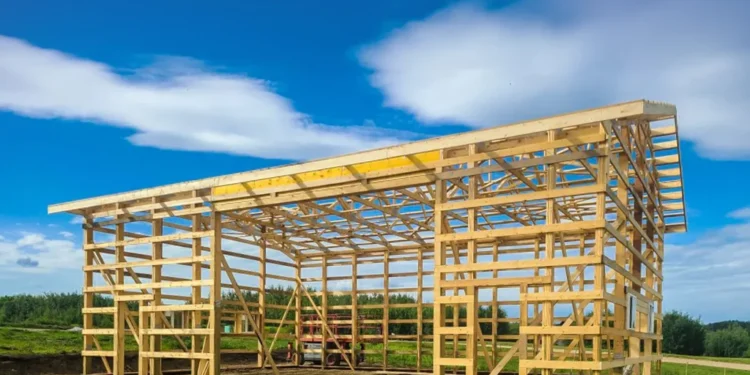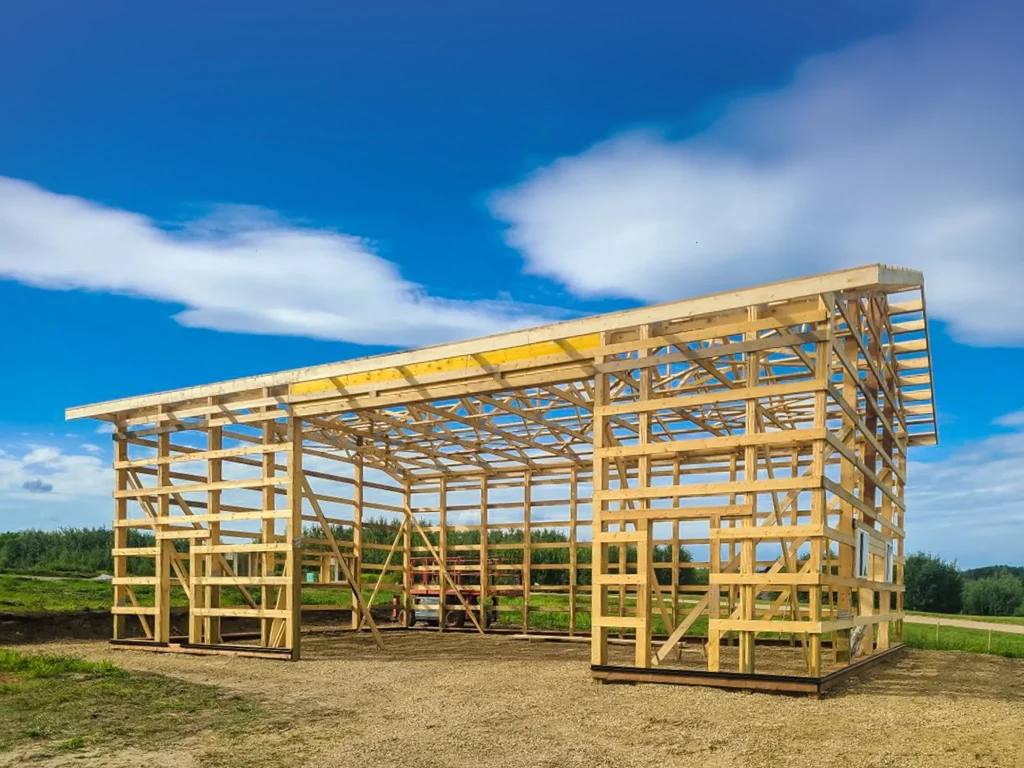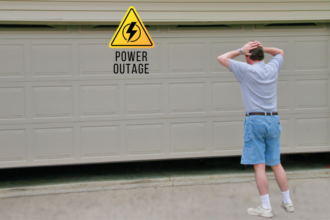Innovative Construction Techniques for Long-Lasting Post-Frame Buildings


Table of Contents
- 1 Key Takeaways
- 2 Table of Contents
- 3 What Is Post-Frame Construction?
- 4 Common Concerns With Traditional Techniques
- 5 Hybrid Materials for Strength and Durability
- 6 Modern Foundation Options
- 7 Energy Efficiency and Environmental Impact
- 8 Maintenance For Long-Lasting Buildings
- 9 Best Practices For Your Next Project
- 10 Future Trends in Post-Frame Construction
Key Takeaways
- Modern post-frame construction offers exceptional versatility, durability, and cost-efficiency for various applications.
- Hybrid materials and contemporary foundation designs improve longevity and performance in post-frame structures.
- Recent innovations enhance energy efficiency, sustainability, and value in agricultural, commercial, and residential buildings.
- Thoughtful design, best practices, and consistent maintenance maximize each project’s useful lifespan and resilience.
Table of Contents
- What Is Post-Frame Construction?
- Common Concerns With Traditional Techniques
- Hybrid Materials for Strength and Durability
- Modern Foundation Options
- Energy Efficiency and Environmental Impact
- Maintenance For Long-Lasting Buildings
- Best Practices For Your Next Project
- Future Trends in Post-Frame Construction
What Is Post-Frame Construction?
Post-frame construction is widely recognized for bringing outstanding adaptability, rapid assembly, and economic value to various building types. This technique employs widely spaced, robust vertical posts as the primary structural element, with horizontal girts and trusses creating expansive, open interiors. Such layouts make post-frame buildings exceptionally flexible, accommodating everything from agricultural barns and machine sheds to retail storefronts, offices, and cozy custom homes. These structures can easily be modified, expanded, or reconfigured for business or personal use as needs evolve. The speed with which these buildings can be erected sets them apart, especially in regions where short construction seasons and tight budgets are common concerns.
One of the pivotal developments in the past decade revolves around upgrading post frame building foundations. These advances are instrumental in safeguarding against water damage, frost heave, and soil movement—traditional trouble spots for older post-frame designs. By integrating well-engineered foundation systems, builders effectively lengthen the service life of their projects and significantly reduce repair costs. These improvements have helped maintain a structure’s strength over the decades and have delivered peace of mind to property owners investing in the future.
Common Concerns With Traditional Techniques
In the early days of post-frame building, untreated wooden posts were routinely set directly into the ground. While affordable and easy to install, this method made structures extremely vulnerable to decay, especially in areas prone to heavy rainfall or persistent humidity. Moisture seeping into buried wood can quickly attract harmful microorganisms, leading to rot, mold, and warping that compromise structural integrity. Research from the USDA Forest Service illustrates how wood-decay fungi can flourish in these conditions, accelerating damage beyond what can be seen with routine visual checks.
Additional concerns often arise regarding overall building longevity, insulation performance, and issues with uneven settling or shifting foundations. Small cracks and gaps in poorly insulated envelopes may also drive up energy bills as structures age. Post-frame construction can become less appealing when measured against longer-lasting, higher-efficiency alternatives without a forward-thinking approach to addressing these pain points.
Hybrid Materials for Strength and Durability
Today’s best-in-class post-frame buildings are constructed using a thoughtful combination of wood, steel, and concrete elements. By utilizing concrete or steel for all areas in direct contact with the earth, builders virtually eliminate the risk of rot and insect infestation—a perennial problem for wooden posts. Engineered lumber and galvanized steel offer unparalleled resilience against extreme winds, seismic activity, and snow loads, further extending the viable lifespan of these buildings. This hybrid approach also offers design flexibility, making incorporating large doors, clear spans, or mezzanine levels easier, which are sought-after features for commercial and agricultural applications.
Field studies and real-life examples show that these upgraded systems routinely outperform all-wood builds across a spectrum of climate zones. Hybrid post-frame structures also tend to require fewer insurance claims for storm or pest-related damage, translating into substantial savings in maintenance and repair costs over the years. As building codes and owner expectations continue to rise, integrating multiple material types is a prudent step toward futureproofing and cost containment.
Modern Foundation Options
Advances in foundation technology have pushed post-frame construction into a new era of reliability. No longer limited to burying posts or relying solely on poured concrete footings, today’s builders incorporate precast concrete columns, hybrid piers, helical piles, and block footings for maximum strength and stability. These options help spread loads evenly across the soil, reduce the impact of frost heave and shrink-swell cycles, and keep vital building supports dry and protected from contact with corrosive soils. Engineers can select specific foundation types matching each building’s height, weight, and soil conditions for customized results.
Adopting factory-built foundation components and modular systems streamlines many projects, ensuring components are produced under controlled conditions for consistent quality. According to recent construction industry reports, this trend toward precision and speed is changing what clients expect in durability and value. These innovations reduce construction delays, allow quicker occupancy, and support high-performance, code-compliant buildings in diverse climates.
Energy Efficiency and Environmental Impact
The drive for more sustainable and energy-conscious construction can be seen throughout the post-frame building industry. Generous wall cavities typical of post-frame techniques can accommodate high-performance insulation and state-of-the-art vapor barriers. When combined with tight air sealing, buildings retain heat more effectively in winter and keep cool air inside during the sweltering summer months. With energy prices climbing and regulatory standards becoming more stringent, these enhancements are more than nice-to-have—they’re essential.
Thoughtful design choices further reduce environmental impact. Metal roofing and siding products are highly recyclable, and prefabrication of structural components minimizes material waste at the construction site. Using locally sourced products whenever possible also helps lower the building’s total carbon footprint. As the construction industry embraces green certification programs and clients place a premium on sustainability, post-frame builders increasingly leverage their methods to deliver eco-friendly, efficient, and comfortable spaces.
Maintenance For Long-Lasting Buildings
Long-term value in post-frame construction hinges on attentive, proactive maintenance. Even the strongest hybrid materials require regular checks to ensure long-term performance. Clearing roof gutters and downspouts and ensuring proper site drainage prevents unwanted water accumulation at the base of structures. Property owners should make it a habit to watch for condensation or leaks at any juncture where wood, metal, or concrete are joined, as these are common entry points for moisture and decay.
Post-frame buildings that receive routine professional inspections—especially following heavy storms, rapid freeze-thaw cycles, or seismic activity—often outperform similar structures with less oversight. Maintenance documentation is useful for tracking repairs and can also enhance resale value and simplify insurance claims. A consistent regimen, even as simple as annual touch-ups and biannual inspections, will pay dividends in reduced repair expenses and a longer building lifespan.
Best Practices For Your Next Project
- Before selecting a building location and foundation system, carefully evaluate site characteristics, including drainage, elevation, and soil type.
- Where possible, opt for hybrid structural systems incorporating precast or steel foundation elements with engineered wood framing for peak longevity.
- Proper insulation, smart ventilation, and strategic window placement are key factors in prioritizing energy-efficient features early in the design phase.
- Partner with up-to-date architects and engineers on evolving building codes, energy regulations, and extreme weather mitigation tactics.
- Plan for easy access to high-maintenance areas such as rooflines, gutters, and below-grade components, ensuring future care doesn’t disrupt your operation or daily life.
Future Trends in Post-Frame Construction
Looking ahead, post-frame construction appears poised for even greater adaptation and innovation. Advancements in design software enable precise modeling, allowing for better anticipation of stress points and building movements. Automation and prefabrication are cutting costs and time onsite while enabling higher customization for aesthetics and performance. Sustainable materials like recycled steel and rapidly renewable timber are becoming integral to forward-thinking designs.
As the world grapples with climate change and resource management, expect post-frame systems to lean further into sustainability, designing easier structures to deconstruct and relocate, reducing waste, and supporting evolving community needs. Those willing to adopt the latest techniques and materials will enjoy buildings that continue to perform, inspire, and retain substantial market value for future generations.






